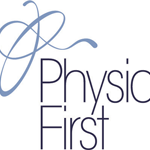Welcome to the Hart Physio resource for injury care.

At Hart Physio our aim is to help you achieve optimal health and recovery from injuries. For information on specific injuries, please click on our injuries and conditions category.
Acute Injuries occur suddenly during activities. Examples of acute injuries include sprained ankle, strained back, or fractured hand. When you have an acute injury there are actions you can apply to minimize tissue damage, protect from further injury and promote faster recovery.
The most important things to do in the first 5 days after injury:
Days 1-2
- seek medical help
- protect the joint
- POLICE not RICE
This is a recent change within Sports Medicine and recognises the need for optimal loading of the area. This allows the body region to be strong and functional whilst protecting it from further injury. Your Physiotherapist will guide you on this as it may require crutches, braces or supports.
POLICE stands for Protection, Optimal Loading, Ice, Compression and Elevation.
Days 3-5
- Begin gentle range of motion as advised by your Physiotherapist
Acute Injury Reference Guide
The following is a reference list of common terms and guidelines that we may use at Hart Physio to assist with emergency care for acute injuries.
Braces
For acute injury or during a post-operative period, common braces include:
- walking cast
- wrist splint
- ankle brace
- knee brace
- finger/toe splints
- casts (hard and removable)
Diet. The body’s injury recovery process is fueled by carbohydrates but we also need protein (found in meat/pulses/cheeses etc.) – the building blocks for building new tissue
Elevation: Keeping the affected body part above the level of the heart to promote drainage and minimize swelling.
Heat Vs Cold.
When an acute injury first occurs, bleeding, inflammation, swelling and pain must all be controlled. Ice should be applied as soon as possible in order to cool the tissues, reduce their metabolic rate and nerve conduction velocity and cause vasoconstriction of the surrounding blood vessels. It will help to numb the pain.
Ice should remain in contact for up to 20 minutes at a time depending on the size of the area being treated and the depth of the injured tissues. It should be re-applied regularly, every 1-3 hours. Following approximately the first 3-5 days of an acute injury, once bleeding has stopped and there are no signs of inflammation, you may wish to alternate cold and heat treatments. That is apply cold for 10 minutes, followed immediately by 10 minutes of heat. Doing this causes massive increases in blood flow to the area as the vasoconstriction caused by cooling reverses when heat is applied, resulting in an influx of blood to the damaged tissues. Ensure all bleeding has stopped before applying this technique. Blood is vitally important in providing all of the energy and nutrients that the body needs for repair.
Ice Application – best results are achieved using crushed ice, either in a plastic bag or a towel, aply directly to the injured area. When using frozen gel packs, a damp towel should be placed on the skin prior to application. While they are reusable and economical they can reach a much lower temperature than ice and can cause frostbite if applied directly to the skin. Instant, crushable cold packs are convenient, but can become expensive, and often do not stay cold long enough to be effective. You will find that a bag of frozen peas is the best ice pack around. Aim for 15 minutes on and 15 minutes off, although for small injuries eg. Fingers or toes the time can be reduced.
Compression. Use of tubigrip as needed (avoid sleeping in it). If the skin turns blue, remove the compression. This directional wrap encourages swelling to leave the body via the lymphatic system. Apply the garment as soon as possible after the injury.
Inflammation. Inflammation is important in the first 48 hours to allow the body’s natural healing chemicals time to work.
Rest: Rest can range between absolute and relative.
Return to Activity
When you can safely resume normal activities of daily living and/or return to your sport will depend on the body part injured (e.g. muscle, tendon, ligament or bone and the magnitude of the injury).
Swelling. Swelling can cause further damage the longer if it is in the joint, and it needs to be controlled.
MEDICATION
Medications are often prescribed to decrease pain and inflammation. You should always consult your doctor before taking any new medications. Some medications can act as both pain-relievers and anti-inflammatories.
At Hart Physio we work with you to speed up recovery and prevent further injuries.




